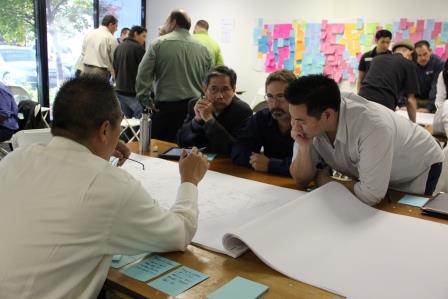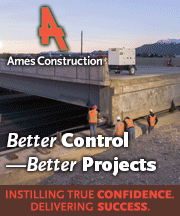
LA Delivers Healthcare Facility with the Clock Ticking
Issue 2 of 2016
The High Desert Regional Health Center is a stellar example of how the coordination of a design-build team can produce high quality under the strictest of time limits.
The people of the High Desert in Lancaster, California have long relied on Los Angeles County Healthcare facilities to meet their healthcare needs, but the only location for those services was set in the middle of a sprawling correctional facility community on the outskirts of town and through a network of clinics sprawled throughout the region. In addition, the Affordable Care Act not only changed the focus away from hospitalization to a model driven more by outpatient care, but also changed the nature of reimbursements and created health insurance exchanges. These changes now provided patients a choice in providers, thus creating a need for the County to compete for patients with other healthcare organizations.
Have you heard? IQ now comes digital!
View this article in the digital version of our magazine by clicking here!

So the County selected a new location in the heart of the city to emphasize their commitment to the region with a state-of-the-art medical care facility. Located close to the center of town for a strong presence, maximum visibility and identity, the center serves as a testament to the County’s commitment to healthcare and the High Desert region. Furthermore, the design-builders made a point of hiring local residents, surpassing the County’s 30 percent goal by hiring 40 percent of the workers from the local area.
The County of Los Angeles knew what they wanted in a new healthcare facility, and set aggressive time and budget requirements for the project. But the Board of Supervisors didn’t meet to execute the contract for several months. The design-build team – headed by Swinerton Builders with architect Lionakis and engineers TK1SC and DPB Engineers, Inc. – knew what they needed to begin the project, but without the Board’s blessing, they couldn’t engage user groups to finalize design, while simultaneously they couldn’t assign staff to other projects.
 So, knowing what needed to be done – and working from the County’s Basis of Design documents – the team took a chance and began on preparation work that could be done. They moved forward on certain fast-track items that did not require user input, and developed separate site and structural packages, which accelerated the construction schedule to make up for delay in the design phase.
So, knowing what needed to be done – and working from the County’s Basis of Design documents – the team took a chance and began on preparation work that could be done. They moved forward on certain fast-track items that did not require user input, and developed separate site and structural packages, which accelerated the construction schedule to make up for delay in the design phase.
Of course, once the contract was signed and the team began consulting with end users, changes arose. Those changes requested by the users were color coded to prioritize them – those that would be inexpensive against those that would require major reworking, affecting schedule, budget or both.
In addition to staying on time and on budget, the new High Desert facility had to deliver quality. And the team’s collaboration and coordination were a major factor in doing just that. All forms of communication were used to keep the design-build team and the end users on track. Co-location helped to combine the collective knowledge of all those involved. User group meetings ensured the design-build team incorporated features that would be important in the final facility. Multi-discipline peer review sessions during the design phase ensured that all stakeholders could review drawings together to find areas of concern and address them before proceeding to construction.
All of the advance planning, teamwork and coordination paid off. In addition to its beauty and efficiency, The High Desert Regional Health Center also includes a number of sustainable design elements, such as photovoltaic paneled covered walkways, groundwater replenishing site drainage, collection and harvesting systems and low water use plant materials native to the High Desert region. While the project was required to achieve LEED® Silver certification, these features and others resulted in LEED Gold Certification at no additional cost.
As David P. Howard, Assistant Deputy Director for the County of Los Angeles Department of Public Works wrote in his letter to the awards jury, “The new High Desert Regional Health Center has been well-received by the local community. The collaboration of the design-build team with the County made this result possible, and demonstrates the benefits and advantages of using the design-build project delivery method. The County is very proud of this project, and is actively embracing the use of design-build for many other projects as part of its on-going capital improvement program.” In the end, the entirety of this project’s delivery process – from expertly handling unforeseen delays, to adding new sustainability elements, to the end result – is what allowed the High Desert Regional Health Center to win a 2015 National Design-Build Project/Team Award in the Healthcare Facilities category.
<< State of the Union Panel | Tunnicliffe wins Brunelleschi >>
Related Stories:
2015 Merit Award Winners: Healthcare Facilities Category








